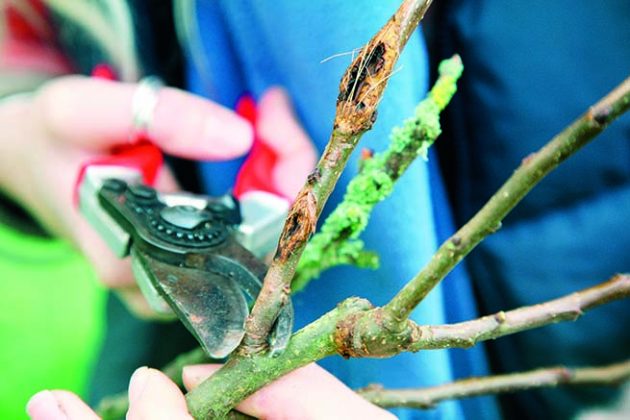The vagaries of the weather over the past two summers has meant approaching the garden in November differently, as well as noting the absence of some familiar ‘friends’ says Ursula Buchan
I like to think that I am a proper gardener, by which I mean that cataracts and hurricanoes have to spout until they drench our steeple (we live next door to the church) before I am coaxed inside for tea. However, although I can be stalwart if a task needs finishing, in truth I would so much rather work in the garden with the sun on my back and a gentle breeze playing about my hair. We all would.
I specially find the relentless dreariness of cloud-heavy November days a trial. While I try to busy myself protecting frost-tender plants, pruning blackcurrant bushes, cleaning out the greenhouses, splitting logs and heaping leaves to make leafmould, I am often conscious of a creeping melancholy as the light drains early out of the sky. In recent years, I have taken to fending that off by reflecting on the past season, not only as an antidote to low mood but as a way of preventing the garden years from blurring together, and because what happened this year may have a bearing on what I do next.
Evoke gardening memories to battle the blues
I conjure up a vivid kaleidoscope of memories: of the garden static for weeks on end in spring thanks to a spate of relentless north-easterlies; the extraordinary explosion of goosegrass everywhere; green, lush lawns in August; a complete dearth of lily beetles; niggardly apple crops after the overwhelming cornucopia in 2022, yet marvellous plums and greengages because the trees flowered later and avoided frosts; a dazzling explosion of colour from dahlias and Michaelmas daisies in September.
Last year was a dry one, made drier still by high temperatures in July. On the other hand, this summer the temperatures have mostly been, well, temperate, and there was rain in some quantity in July, for once. Dry summers mean not only that plants droop or drop their leaves – and set seed more quickly as a survival mechanism – but they starve as well, since nutrients can only enter plant roots in solution. Little of that happened this year.
Disappearing lily beetles
As for the lily beetles, where were they? Normally, I would pick off dozens of the beautiful, sealing wax red critters, which lay eggs on the undersides of lily leaves; from these emerge larvae with voracious appetites all the while covering themselves in a horrible slimy excrement called ‘frass’. This summer I have not seen a single one. These foreign beetles first flew in large numbers across the English Channel – along with the Luftwaffe – in the hot summer of 1940 and, now resident in the UK, appear every summer to torment lily and fritillary lovers. They spend the winter as adults in the soil or leaf litter, and I can only imagine that the brutal sub-zero temperatures that froze the ground last December killed many off. No doubt, like The Terminator [the film character portrayed by Arnold Schwarzenegger], they’ll be back.

A Meadow Brown butterfly: happy memories from the garden earlier in the year
I promised to report on my experience with peat-free composts, now that the ban on bagged peat composts for gardens is imminent. I have discovered that using peat-free composts requires a different approach; I must be slow to reach for the watering-can when the surface in a pot looks dry but instead lift up the pot to check the weight or poke my finger into the compost to see if it is damp below, since overwatering risks suffocating young roots. What is more, I find I have to use a liquid feed earlier and more frequently. In a totally unscientific experiment, I tried a number of brands this year, and I got on best with the, admittedly pricey, organic seed and multipurpose composts – a mixture of coir, vermiculite and loam – from Fertile Fibre. They are easy and pleasant to handle, and seem to hold nutrients well enough.
Reflecting on the garden in November
The highlight of the summer for me was the brief 15 minutes in early August that I spent taking part in the Big Butterfly Count, organised by Butterfly Conservation. In that time, I observed eight species (of the 14 that I have seen in the garden), including Commas, Red Admirals, Gatekeepers, Meadow Browns and Peacocks, feeding on one small patch of flowering Echinacea purpurea. The sight lifted my heart. Regrets – I’ve had a few, as always. A friend, gardening on the same horrible clay that bedevils me, boasted that his Eucryphia ‘Nymansay’ was flowering. Why did I not plant one of these choice, white-flowered August shrubs 20 years ago? Because, in those days, I didn’t spend November days reflecting on the season and planning for the future, that’s why.
If you enjoyed this feature, be sure to take a look at Ursula Buchan’s thoughts on apple trees, coloured foliage, dealing with weeds and the best gardening books for novice gardeners.





